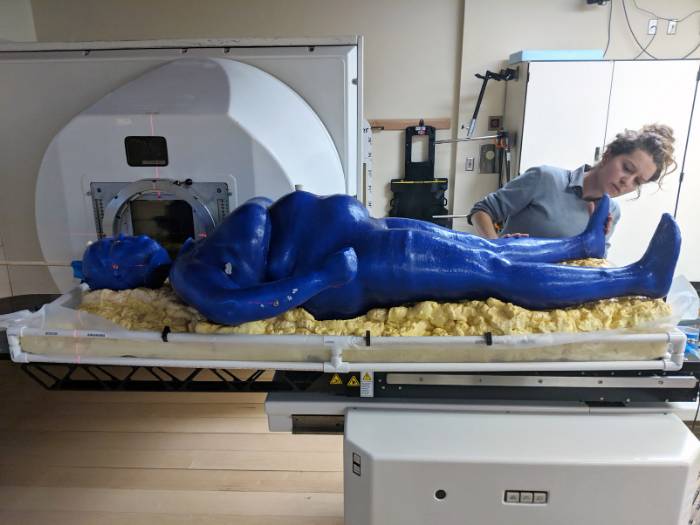The development of a new type of rechargeable lithium battery, which labs have pursued throughout the world for years, that is more lightweight, compact, and safe than current ones, may now be possible thanks to a discovery made by MIT researchers.



People affected by the lethal glioblastoma cancer only live for 12–18 months after diagnosis.
A global trial that began in 2007 has confirmed that a vaccine for the treatment of the most lethal brain cancer can give patients years of extended life.
Glioblastoma is not only the most common form of brain cancer but is also one of the deadliest. People affected by the disease only live just 12–18 months after the diagnosis, or even less.
Now, thanks to the vaccine DCVax, some 2,500 people who are diagnosed with deadly cancer in the UK could be benefitted.

‘Never in my career have I seen such a complete failure of corporate controls,’ says the new CEO of FTX.
Cryptocurrency venture Multicoin Capital has written a letter to its investors about further fall in the business before it could recover.
In the upcoming weeks, the company anticipates that the FTX pandemic will “wipe out” several trading firms, according to a report by CNBC.

Very few have signed up for Musk’s Twitter 2.0.
Getty Images.
Among the ones who were retained, hundreds of employees quit this Thursday following a Musk email asking them to sign up to work long hours at high intensity and put in exceptional performances. Elon Musk, who had set a 5 pm deadline through a Google form, did not anticipate that hundreds would not take up such a role.

That is the claim of Ron Baron, who invested 6.7 billion in Tesla.
Baron Capital one of the largest and well respected of all the financial firms, held a live event for investors this year. This was the first live event for the firm since 2019, and it was held at the Metropolitan Opera House in New York City. The main guest was Elon Musk, CEO of Tesla. The focus was Tesla will become the most profitable company in the world.
There were 5,000 investors present at the event, and they all had a chance to hear where the Tesla CEO thinks the company is going in the future.
Getty Images.
Ron Baron, owner of Baron Capital, interviewed the celebrity billionaire, and Baron is bullish on Tesla. Baron Capital has 19 funds, totaling approximately $40 billion in assets. Many of these funds are heavily invested in Tesla.
In recent years, updates in 3D printing technologies have allowed medical researchers to print things that were not possible to make using the previous version of this technology, including food, medicine, and even body parts.
In 2018, doctors from the Ontario Veterinary College 3D printed a custom titanium plate for a dog that had lost part of its skull after cancer surgery.


face_with_colon_three circa 2018.
Meagan Moore, a Biological and Agricultural Engineering student from Louisiana State University (LSU) has 3D printed a full-size model of the human body for use in radiotherapy.
Such models used in radiotherapy mimic the human tissue, and in medical terms are known as imaging phantoms or phantoms. They are used in radiotherapy to estimate the amount of dose delivery and distribution. A customized phantom of a patient can make the whole process more precise.
3D printing and cancer research
As has been previously reported, 3D printing is being explored by researchers for use in cancer treatment. Earlier this year, Adaptiiv Medical Technologies’ 3D printed bolus was approved for radiation therapy.
Circa 2021 face_with_colon_three
A company recently developed a novel system capable of printing biological tissue in a blindingly fast 30 seconds. Ultimately, this new method could, one day, help bring an end to diabetes, according to a blog post shared on the Ecole Polytechnique Federale de Lausanne’s (EPFL’s) official website.
Called Readily3D, the company’s technology has seen widespread use in a large-scale European project to build a living model of the human pancreas, which could also provide a safe alternative for testing new drugs.

Circa 2021 face_with_colon_three
In the cosmological context, space can get similarly stuck in a false vacuum state. A speck of false vacuum will occasionally relax into true vacuum (likely through a random quantum event), and this true vacuum will balloon outward as a swelling bubble, feasting on the false vacuum’s excess energy, in a process called false vacuum decay. It’s this process that may have started our cosmos with a bang. “A vacuum bubble could have been the first event in the history of our universe,” said Hiranya Peiris, a cosmologist at University College London.
But physicists struggle mightily to predict how vacuum bubbles behave. A bubble’s future depends on countless minute details that add up. Bubbles also change rapidly — their walls approach the speed of light as they fly outward — and feature quantum mechanical randomness and waviness. Different assumptions about these processes give conflicting predictions, with no way to tell which ones might resemble reality. It’s as though “you’ve taken a lot of things that are just very hard for physicists to deal with and mushed them all together and said, ‘Go ahead and figure out what’s going on,’” Braden said.
Since they can’t prod actual vacuum bubbles in the multiverse, physicists have sought digital and physical analogs of them.